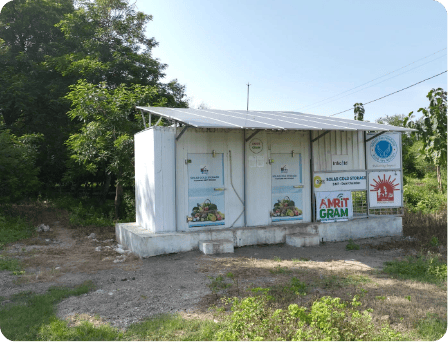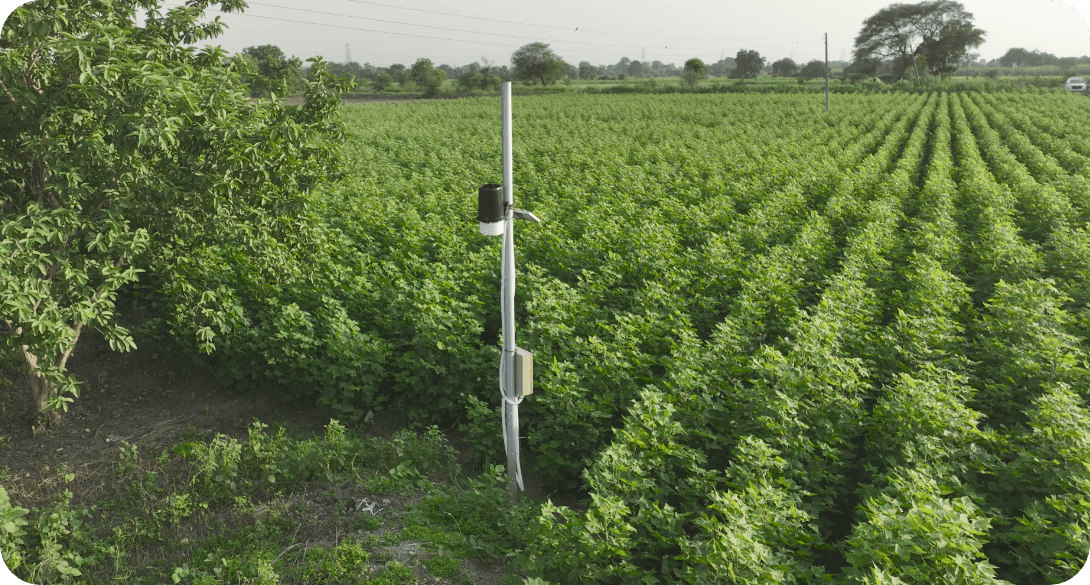
India’s first IOT, Clean Energy,5G Enabled Smart Village
According to Census 2011 information the location code or village code of Bhugaon village is 535801. Bhugaon village is located in Kamptee tehsil of Nagpur district in Maharashtra, India. It is situated 23km away from sub-district headquarter Kamptee (tehsildar office) and 26km away from district headquarter Nagpur, Bhugaon village is a gram panchayat. Bhugaon is well connected by highways network it took 40 minutes to reach from Nagpur.
Geographical area and Population
The total geographical area of village is 810.09 hectares. Bhugaon has a total population of 6,500 peoples. There are about 1350 houses in bhugaon village.
supported by one Ayurvedic clinic
and supporting staff
one Private school

Installation of digital medical consultation mechanisms or e-PHC (Primary Health Centers)& Remote Healthcare Services including dispensaries(e-dispensary) (SDG-3)
Bhugaon PHC has seven sub-centers located in the vicinity of the village. Digitization in this scenario will help in integration of these centers for timely healthcare access.
E-consultation(Medical consultation via web) will be set up via IOT enabled video conferencing setup which will help provide immediate relief for non-surgical medical issues. BP monitoring, ophthalmic tests and other such tests will be conducted at the e-consultation centers.
Integration of 5g and IOT will enable remote healthcare services, such as telemedicine, which can be particularly useful in rural areas where access to healthcare is limited. With 5G-enabled video conferencing and IoT-enabled medical devices, doctors can remotely diagnose and treat patients, reducing the need for travel and improving the overall quality of care.
Installation of digital medical consultation mechanisms or e-PHC (Primary Health Centers)& Remote Healthcare Services including dispensaries(e-dispensary) (SDG-3)
Bhugaon PHC has seven sub-centers located in the vicinity of the village. Digitization in this scenario will help in integration of these centers for timely healthcare access.
E-consultation(Medical consultation via web) will be set up via IOT enabled video conferencing setup which will help provide immediate relief for non-surgical medical issues. BP monitoring, ophthalmic tests and other such tests will be conducted at the e-consultation centers.
Integration of 5g and IOT will enable remote healthcare services, such as telemedicine, which can be particularly useful in rural areas where access to healthcare is limited. With 5G-enabled video conferencing and IoT-enabled medical devices, doctors can remotely diagnose and treat patients, reducing the need for travel and improving the overall quality of care.


Cattle monitoring in animal husbandry,cattle welfare and dairy farming(SDG-15)
A harmless neck band would be placed on the neck of animals for real-time health monitoring, with critical health alerts sent immediately to the farmer for immediate assistance and other alerts such as milking period in cows would be provided for a data driven farming approach.
Installation of solar cold storage
Such storage measures will help extensively in storing animal or plant produce during less demand or non-immediate requirements or unforeseen circumstances such as calamities, disruption in supply chain, failed crop, etc.


Installation of solar milk chillers(SDG-9)
Such storage measures will help extensively in storing animal or plant produce during less demand or non-immediate requirements or unforeseen circumstances such as calamities, disruption in supply chain, failed crop, etc.
Drone based irrigation systems for targeted spraying(SDG-12)
Drones will help irrigate the field with targeted and judicious use of water and insecticides, thus reducing the usage of water and ensuring that insecticides are sprayed in permissible levels.


Setting up of digital infrastructure in Zilla Parishad schools(SDG-4)
We will provide smart boards, computers, AR/VR Sets, e-Books and other technical infrastructure to schools for e-age learning.
Setting up of Water ATMs ,IOT based water treatment plants for source sustainability(SDG-6,7,12)
Water ATMs and water treatment plants will be set up for access to affordable clean water in the village. This will provide access to clean drinking water to underserved. The IOT monitoring of rural water supply schemes will ensure the scheme sustainability as well as accountability of the water utility in the village


A smart and sustainable village can leverage digital and IoT technologies to improve the delivery of essential services such as healthcare, education, and public utilities. For instance, telemedicine and e-learning platforms can bring quality healthcare and education to remote areas, while IoT-enabled water and waste management systems can ensure efficient use of resources and maintain hygiene.
Digital and IoT technologies can bridge the gap between rural and urban areas by providing high-speed internet and robust communication networks. This connectivity can help rural citizens access information, government services, and opportunities for skill development and entrepreneurship.
A smart and sustainable village can drive economic growth and create jobs by promoting local industries and small businesses. For example, clean energy projects can generate employment in the renewable energy sector, while digital infrastructure can enable local artisans and entrepreneurs to access e-commerce platforms and expand their market reach.
Harnessing renewable energy sources such as solar, wind, and biomass can provide a reliable and sustainable power supply to rural areas, reducing dependence on fossil fuels and minimizing carbon emissions. Additionally, smart grids and energy management systems can optimize energy consumption and distribution, ensuring efficient use of resources.
Smart and sustainable villages can promote eco-friendly practices such as solid waste management, rainwater harvesting, and organic farming. IoT-enabled monitoring systems can help track pollution levels and enable data-driven decision-making to preserve the environment and natural resources.
Digital and IoT technologies can improve disaster preparedness and response by providing real-time information on weather patterns, early warning systems, and remote monitoring of critical infrastructure. This can help rural communities become more resilient to natural disasters such as floods, droughts, and cyclones.
Smart and sustainable villages can foster inclusive development by ensuring that the benefits of technology and clean energy reach all segments of society, including women, children, the elderly, and people with disabilities. Digital and IoT solutions can help address issues such as gender inequality, lack of access to education, and limited mobility, empowering marginalized communities and promoting social equity.
Implementing digital, IoT-enabled, and clean energy-based smart and sustainable villages in India can significantly improve the quality of life for rural citizens by providing better access to essential services, promoting economic growth, and ensuring environmental conservation. By leveraging the power of technology and renewable energy, India can drive inclusive and sustainable development in its rural areas, ultimately benefiting the nation as a whole
Our unwavering dedication lies in nurturing agricultural progress, empowering farmers, and advancing sustainable practices for a resilient and prosperous future.
We believe that together, we can make a real impact. Join us today and take a step towards building a better tomorrow!

Rite Water is excited to introduce Amrit Gram™, a ground-breaking concept aimed at creating self-sufficient, self-sustaining, and future-ready model villages in India, to the recipient. This initiative is aligned with the vision of the Honorable Prime Minister of India, Shri Narendra Modi, for a utopian golden period in India called “Amrit Kaal.”
© 2023 Amrit Gram. All rights reserved.